Millions of homeowners are missing out on nature’s most powerful mood-enhancing secret: fragrant indoor plants. These botanical air fresheners don’t just release pleasant aromas – they’re scientifically proven stress-busters and sleep-improvers. “Indoor fragrant plants can reduce anxiety levels by up to 60% when placed strategically around living spaces,” notes botanist Dr. Sarah Chen. The right combination of sweet-smelling varieties can transform any room into a therapeutic haven, but choosing the perfect plants requires specific knowledge.

Contents
Why Fragrant Plants Transform Indoor Spaces
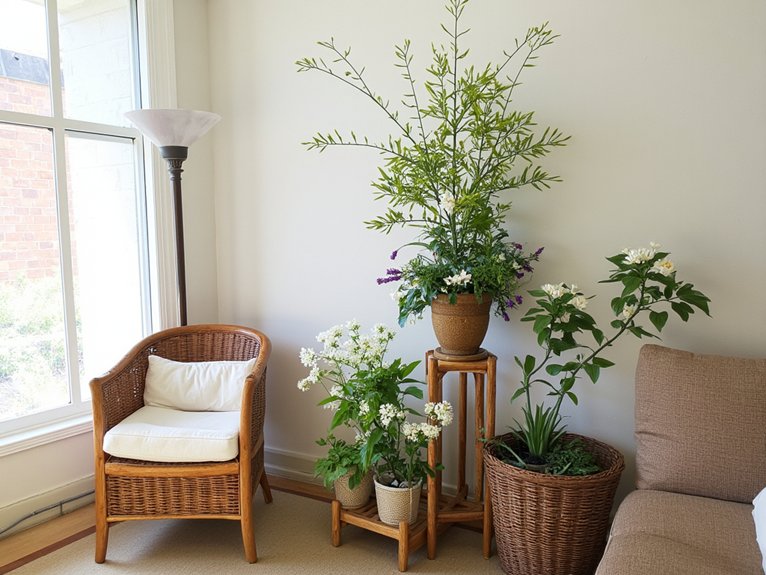
While artificial air fresheners can mask odors temporarily, fragrant indoor plants offer a natural and long-lasting way to transform living spaces through their therapeutic aromas. Research in fragrance psychology shows that natural plant scents can reduce stress levels and improve mood. These living air fresheners create powerful scent memories that become associated with comfort and relaxation at home.
Unlike synthetic fragrances, plants release their scents gradually throughout the day, providing a subtle but consistent aromatherapy experience. They’re also cost-effective – a single mature plant can perfume a room for months or even years with proper care.
Best Sweet-Scented Plants for Your Home
When choosing fragrant plants for indoor spaces, several sweet-scented varieties stand out as particularly well-suited for the home environment.
Gardenia

Gardenias offer a classic fragrance that instantly elevates indoor spaces. They thrive with at least 6 hours of sunlight daily and reward consistent care with creamy blooms and rich, floral aromas.
Jasmine
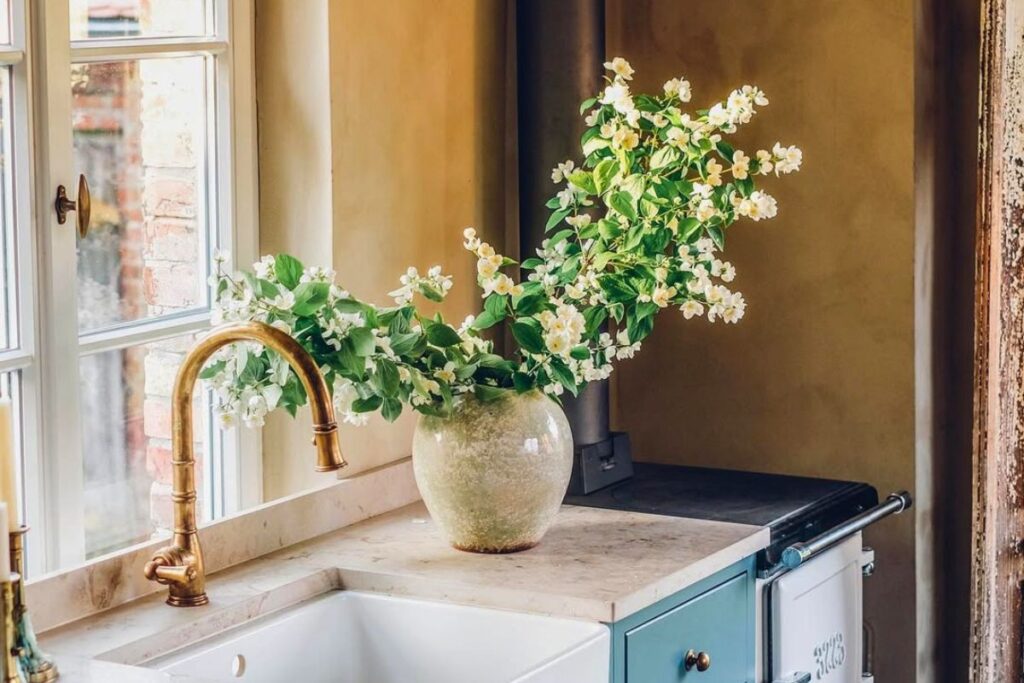
Jasmine’s intoxicating scent perfumes rooms year-round. It works beautifully as a trailing plant or trained on a trellis, releasing a soft fragrance that intensifies in the evening.
Mint
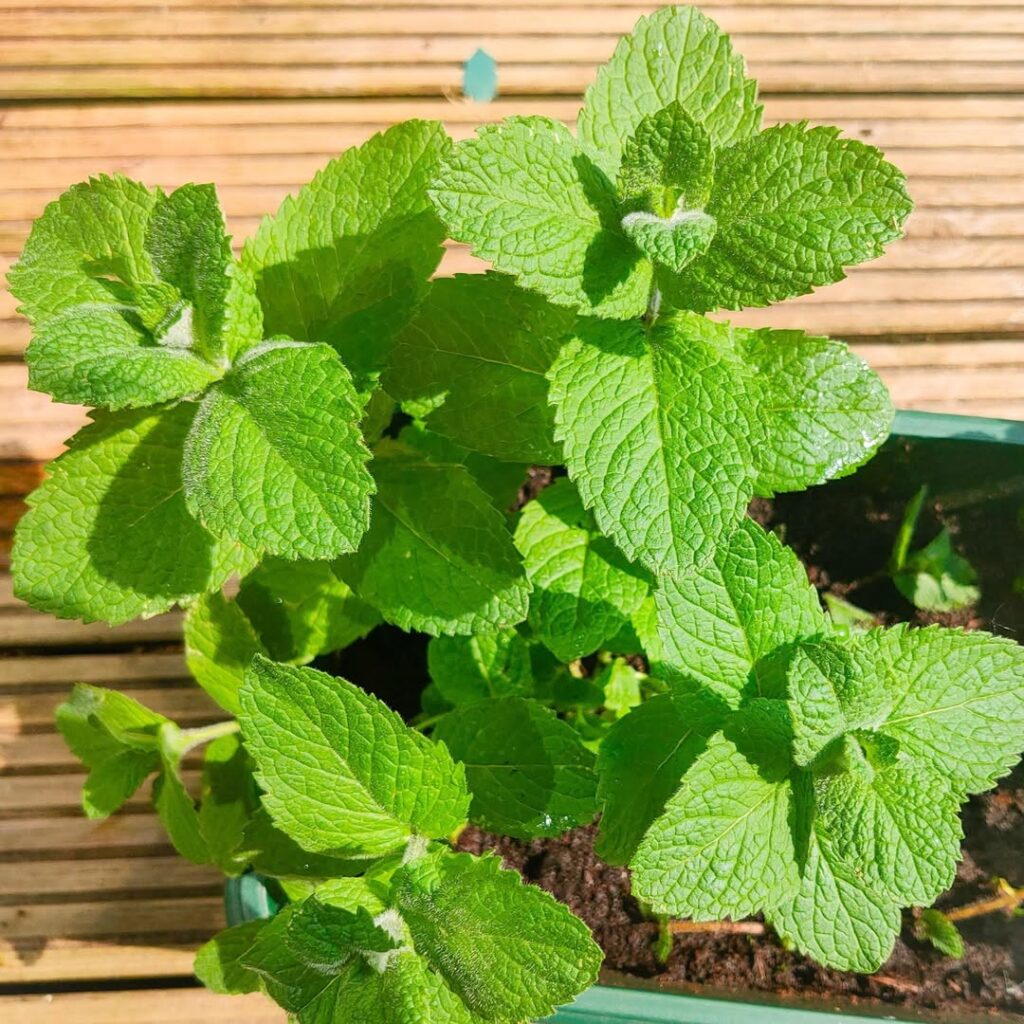
Mint provides a refreshing, crisp scent and doubles as a culinary herb. It’s ideal for kitchens or sunny windowsills, where its fast-growing nature and clean aroma add practicality and charm.
Rosemary

Rosemary brings a bold, herbal fragrance and is great for cooking, too. It prefers full sun and well-drained soil, making it an aromatic workhorse in well-lit indoor gardens.
Hyacinth

Hyacinths deliver powerful bursts of scent in compact spaces. Their vibrant blooms, supported by 8–10 inch stems, fill the air with sweetness during their peak flowering season.
Citrus Plants
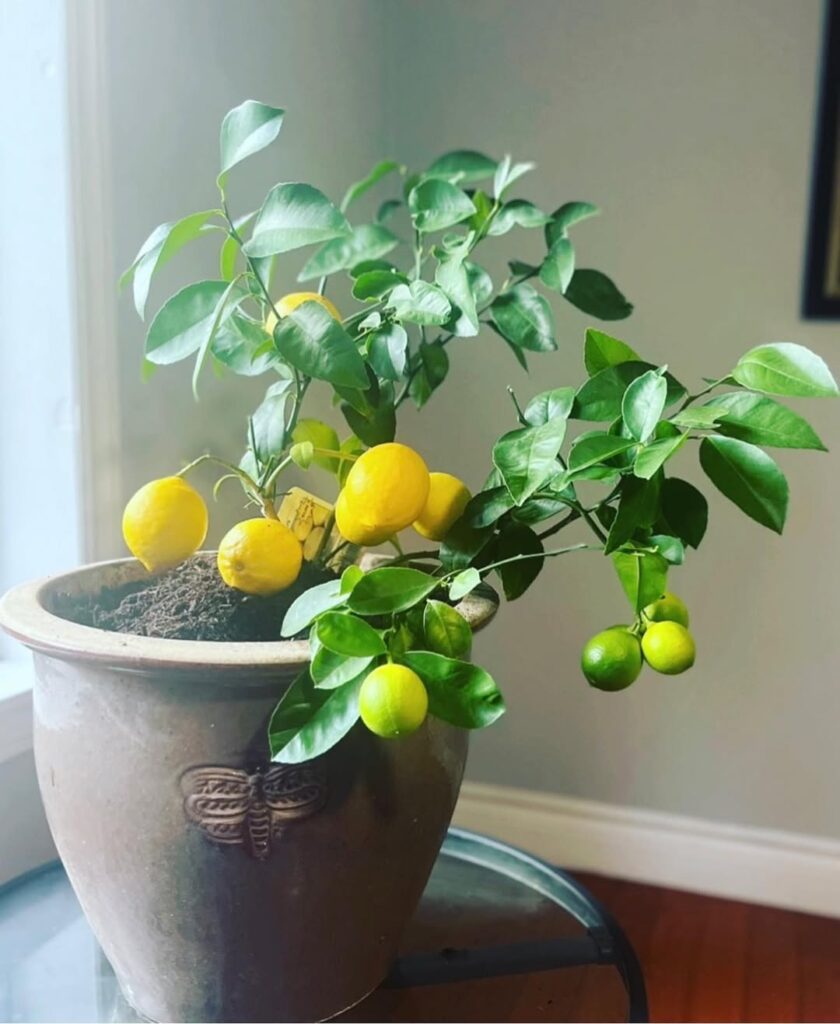
Citrus varieties such as lemon or calamondin emit a fresh, energizing fragrance through both flowers and leaves. They require regular watering and bright light, but are otherwise low-maintenance.
Essential Care Tips for Growing Aromatic Plants Indoors
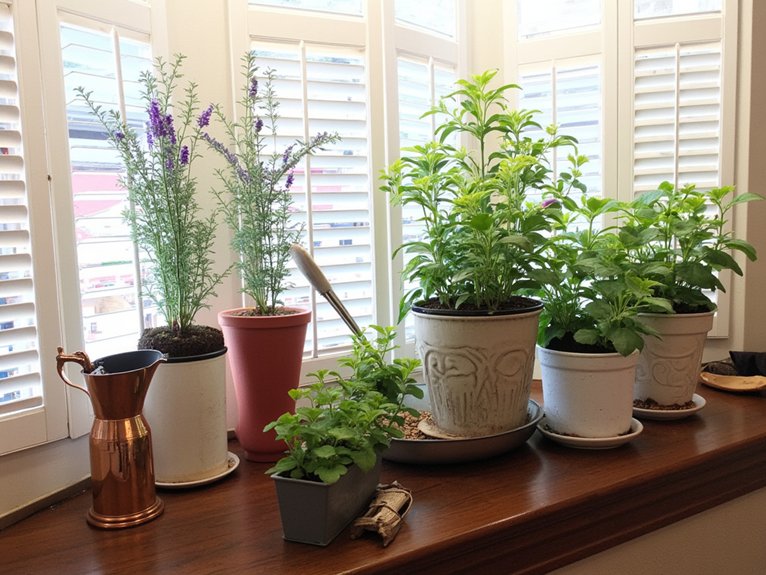
Although many aromatic plants can thrive indoors, successful growth depends on meeting their specific light, water, and humidity requirements. Most fragrant plants need at least 6 hours of bright, indirect sunlight daily, while herbs like rosemary and lavender demand full sun exposure.
Proper aromatic watering techniques are essential. Check soil moisture before watering – most plants prefer the top inch to dry between sessions. Use well-draining potting mix and containers with drainage holes. Maintain humidity by grouping plants together or using pebble trays filled with water, especially for tropical varieties like gardenia and jasmine.
Creating a Scented Plant Sanctuary in Small Spaces
Even in the tiniest apartments, you can design an enchanting indoor garden filled with fragrant plants by strategically selecting and positioning aromatic varieties.
For ideal scented plant selection in compact areas, combine low-growing herbs like mint and lavender with vertical climbers such as jasmine or hoya. Place smaller pots on windowsills and floating shelves, while training vining plants upward on trellises to maximize vertical space.
Small space strategies include grouping plants with similar care needs together and using multi-tiered plant stands. Focus on varieties that offer dual benefits, like rosemary and lemon balm, which provide both fragrance and culinary uses.
Matching Plant Fragrances to Different Rooms
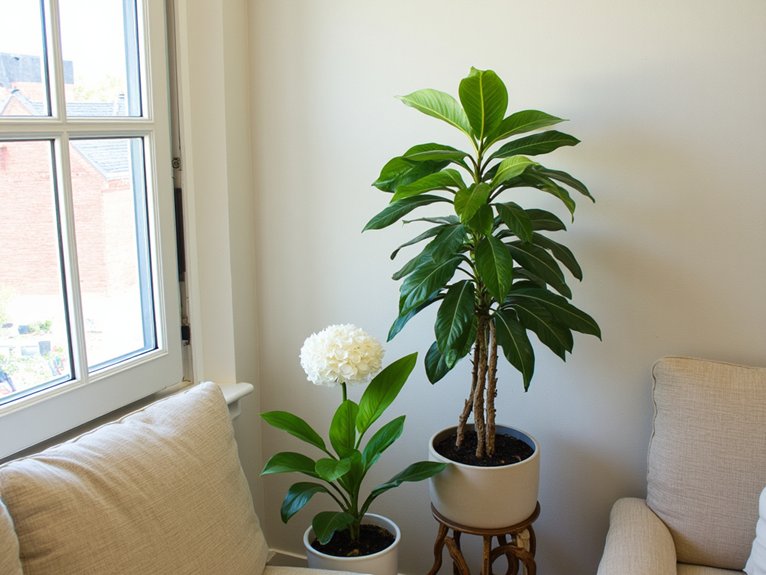
Since different rooms serve unique purposes in your home, choosing the right fragrant plants for each space can enhance both functionality and ambiance. A bright kitchen benefits from aromatic herbs like mint, rosemary, and lemon balm, while bathrooms thrive with humidity-loving gardenias or orchids. Place calming lavender in bedrooms to promote relaxation, and consider citrus plants for living areas where their uplifting scent can energize the space. When planning fragrance combinations, remember that dining areas work best with subtle scents – try a Hoya carnosa or small jasmine plant that won’t overpower meals.
Health Benefits of Living With Scented Plants
Beyond their visual appeal and pleasing scents that enhance specific rooms, fragrant indoor plants offer remarkable health advantages for both body and mind. Plants like lavender and jasmine provide psychological benefits, reducing stress and improving sleep quality. Studies show they can lower blood pressure and anxiety levels.
Many fragrant plants excel at air purification too. Eucalyptus helps clear airways, while rosemary and mint enhance focus and memory. “Indoor plants with aromatic properties create a natural aromatherapy environment,” notes botanist Dr. Sarah Chen. “They’re particularly effective at removing indoor air pollutants while releasing beneficial compounds that boost our wellbeing.”
